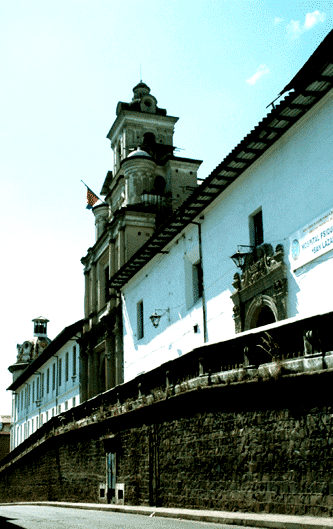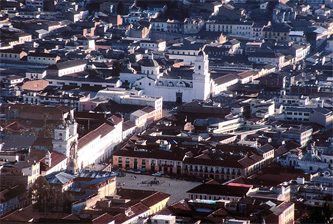 COUNTRY OF ORIGIN
COUNTRY OF ORIGIN• Ecuador
The University of Crafts and Trades promoting know-how and cultural identity
Introduction
The “University of Crafts and Trades” is a new alternative approach to education which originated in the Andes in 2004 (Quito-Ecuador). Its aim is to valorise and preserve the immense wealth of knowledge that lies within the country's population, creating opportunities and markets for everyone, asserting and preserving cultural identity and natural diversity. 
It is a well-known fact that the world’s natural heritage and biodiversity is rapidly shrinking, just as cultural heritage and diversity is fast disappearing in every continent. The symptoms are obvious to everyone. Everyone realises that we need to urgently adopt new courses of action for the future, new educational methods and models that move away from an elitist conception and focus once again on knowledge, the only great wealth in the hands of both developing countries and industrialised nations. It is in this context that the project for a University of Crafts and Trades arose, to meet the challenges faced by society and higher education.
The Quito University of Crafts and Trades is a centre of knowledge and know-how, whose aim is to promote the preservation of cultural heritage, techniques, crafts and historical memory, by networking with the country’s universities and offering bachelor’s and master’s degree courses.
The University is based on models such as PRATEC in Perú, which valorises the culture of ancient Andean villages. In agreement with the la Selva Agrarian University of Perú, PRATEC organised a master’s degree in Andean-Amazonian biodiversity and agriculture in Tingo Maria, involving students, technicians and university professors. The main aim of the master’s degree is to decolonise education and valorise the know-how of local artists, artisans, technical experts and others, who possess knowledge of exceptional value but who are isolated from the career advancement mechanisms that society offers but to a few, generally by means of higher education.
Thus, Quito Mayor Paco Moncayo decided to support the University of Crafts and Trades Project and provided a 13,000 square metre 16th century building in the old part of the city for the purpose. While the building was being renovated a global plan for the university was drafted, with the support of the country’s higher education institutions, the United Nations, UNESCO, and countries such as Spain and Belgium. The Ecuador High University Council recognised the enormous potential that the University of Crafts and Trades had for transforming education and is actively involved in organisation.
Countries in the region have welcomed the idea of establishing and organising a University of Crafts and Trades involving an innumerable number of workshops, laboratories, art institutes, specialists and experts. In many countries there have been surveys on the know-how and specific skills possessed by the people of a community, in cooperation with higher education institutions. The Andean Community of Nations views the possibility of setting up vocational universities in other countries with great interest. This initiative has been recognised by the United Nations and UNESCO as being in complete harmony with the Millennium Goals, the Decade of Education for Sustainable Development 2005-2014, the declarations and action plans for higher education adopted by the intergovernmental conferences promoted by UNESCO at the end of the 1990s, Science and Technology and Cultural Policies for Development. 
DOWNLOAD THE BROCHURE PDF
English (1.4 MB)Spanish (1.4 MB)
French (1.4 MB)
ONLY TEXT
•The University of Crafts and Trades in practice
•Promoting the University of Crafts and Trades in other countries







